It’s not very often you can take a trip to Flat Holm under Suzuki power, but I’ve just done that.
The familiar Japanese brand is probably best known for its cars and motorbikes but it actually makes some of the best outboard motors and it’s pioneering a development with them, just as it has built its business on bright ideas over the last century.
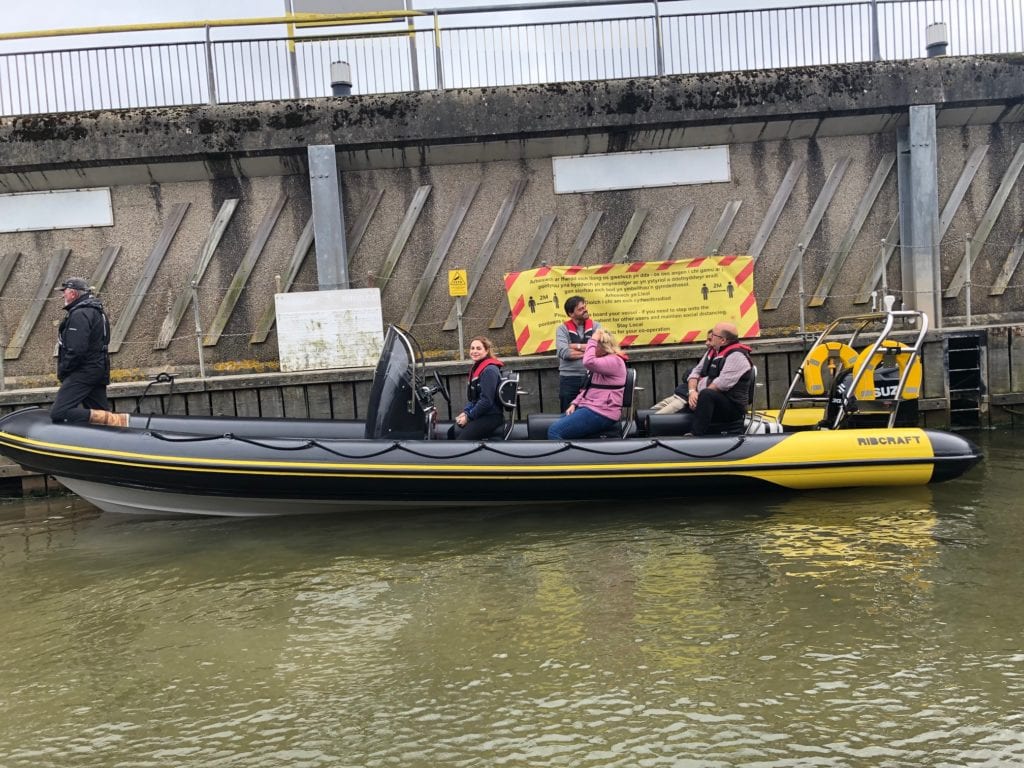
Our trip from and to Cardiff Bay was in a Harrier rib with a 300hp Suzuki outboard and our “driver” was Bruce, who is a full-time Marine Police Officer, and No.1 fan of the boat-builder and engine maker.
“The Harrier is a purpose-built commercial rib which takes the hard knocks hour after hour and day after day,” said Bruce.”It’s perfectly matched with the Suzuki engines because they are quick to attach or release with just six bolts, easy to work on and ultra reliable.”
The newest generation of Suzuki outboards are also greener than ever.
“In service we’ve recorded a 25% fuel saving and when you’re spending upwards of £1,000 on fuel for the ribs that’s a big saving,” added Bruce, who has recently worked at sea protecting the G7 Leaders Summit in Cornwall. That was 12-hour shifts which involved a specially built Harrier complete with an enclosed command and control centre, refreshments and conveniences for teams of police officers.
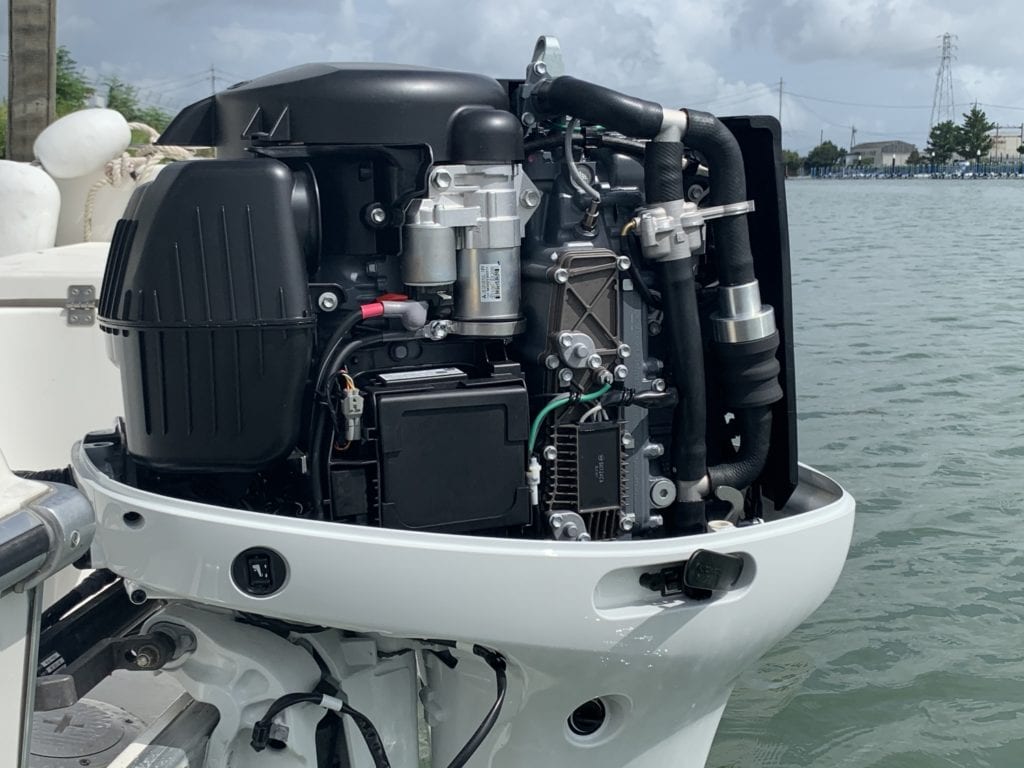
The Suzuki outboards are also trialling a device to catch and contain micro-plastics in seawater which is used to cool the engines when running. This ensures that the filter holds the damaging micro-plastics and they can be safely disposed off when back in port.
The quick trip to Flat Holm saw the Harrier hit a tingling 40knots on the way out but tidal swell brought it down a bit on the return leg and despite the conditions and wave impacts the Harrier never missed a beat.
They may be one of the smaller engineering companies, but Suzuki has consistently shown over a century that it’s the size of an idea which matters.
Some 11 years before the Suzuki Loom Manufacturing Co was officially formed in 1920, founder Michio Suzuki pioneered a new type of textile loom design in 1909 after watching his mother using her labour intensive and primitive device to weave cloth.
Very early looms used a manual cotton thread loading device known as a shuttle so Suzuki decided to design his own and, in summary, managed to patent a much more advanced machine that enabled weavers to work up to 10 times faster and with a lot less fatigue too by utilising his auto thread loading shuttle system. He sold his solution to other weavers and shortly afterwards came up with a method to produce vertical and horizontal stripped cloth.
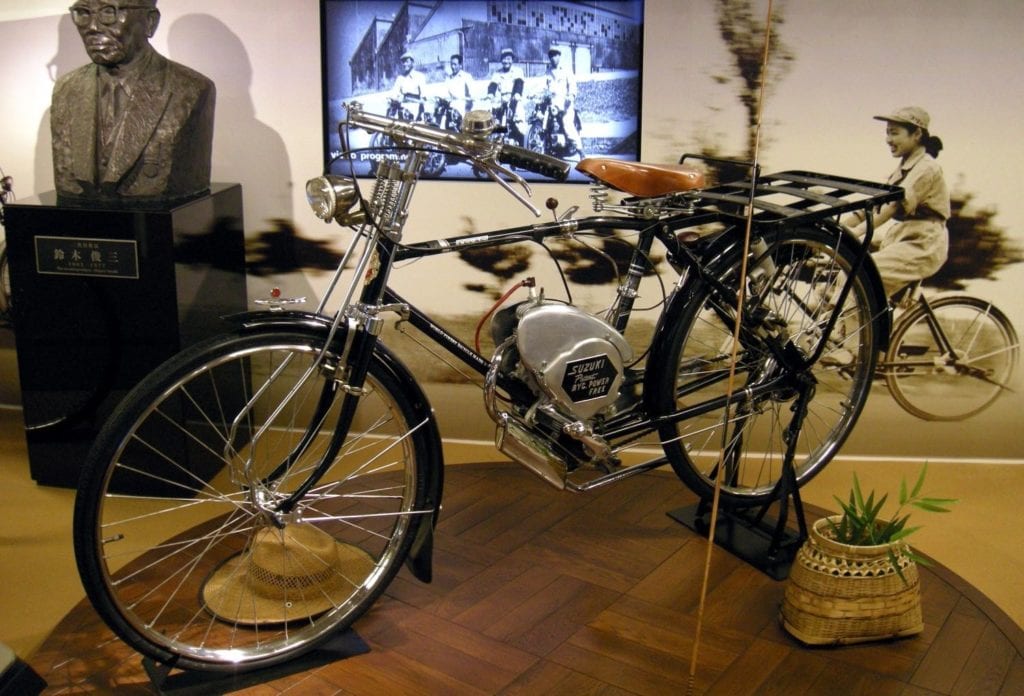
As the motoring age spread around the world in the 1920s and 1930s he considered car making but plans were interrupted by WW2 and in 1951 his son, Shunzo, joined him. That was a turning point for the business. Riding his pedal cycle in strong head winds one day, Shunzo Suzuki realised he could make his daily journey much easier by designing his own simple motor assisted cycle and with his R&D team demonstrated the ‘Power Free’ 36cc motorcycle in 1952 which went into production that same year.
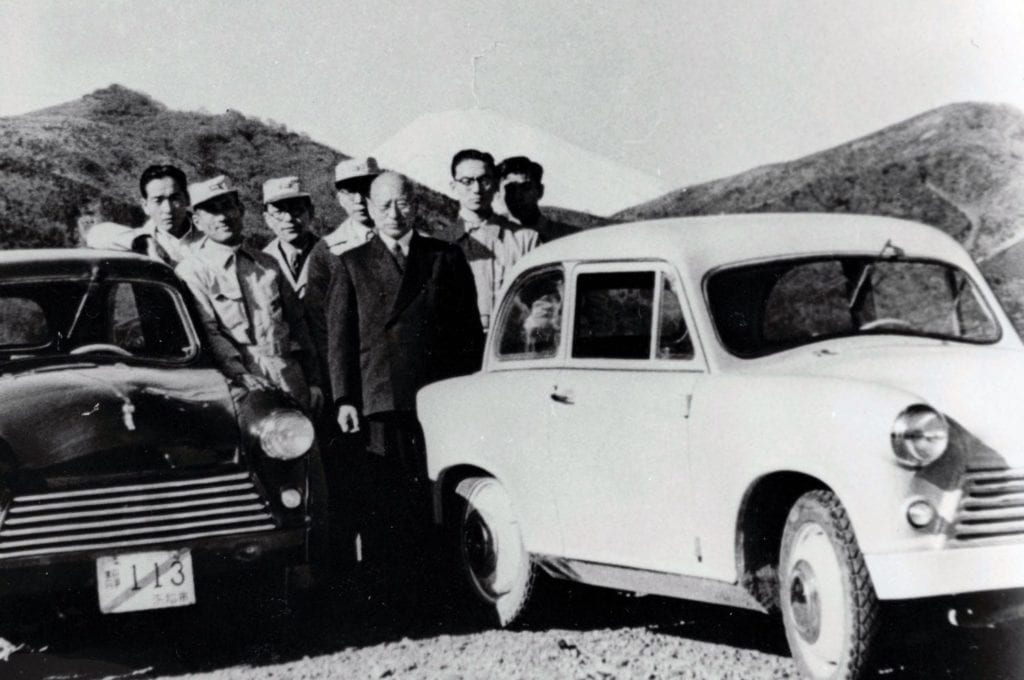
More powerful engines followed and after comparing cars of the day, the father and son created the Suzuki Motor Co and its first car emerged in 1955 with lightweight and innovative design and a two-stroke 360cc engine. The Suzulight was developed by just six people and was the first to have fully independent suspension with rack and pinion steering and it appeared as Japan’s first car to have front wheel drive with a front engine. They realised how the business could develop and wisely trademarked the now well known ‘S’ symbol in 1958.
Motorcycle development continued and their machines were loved by riders and hit international recognition winning their class in the 1962 Isle of Man TT.
Every interested in the widest application of automotive power, Suzuki looked at boats and produced its first outboard motor, a 5.5hp unit in 1965. Six years later it showed its Snowmobile and in 1974 a Suzuki designed and powered wheelchair.
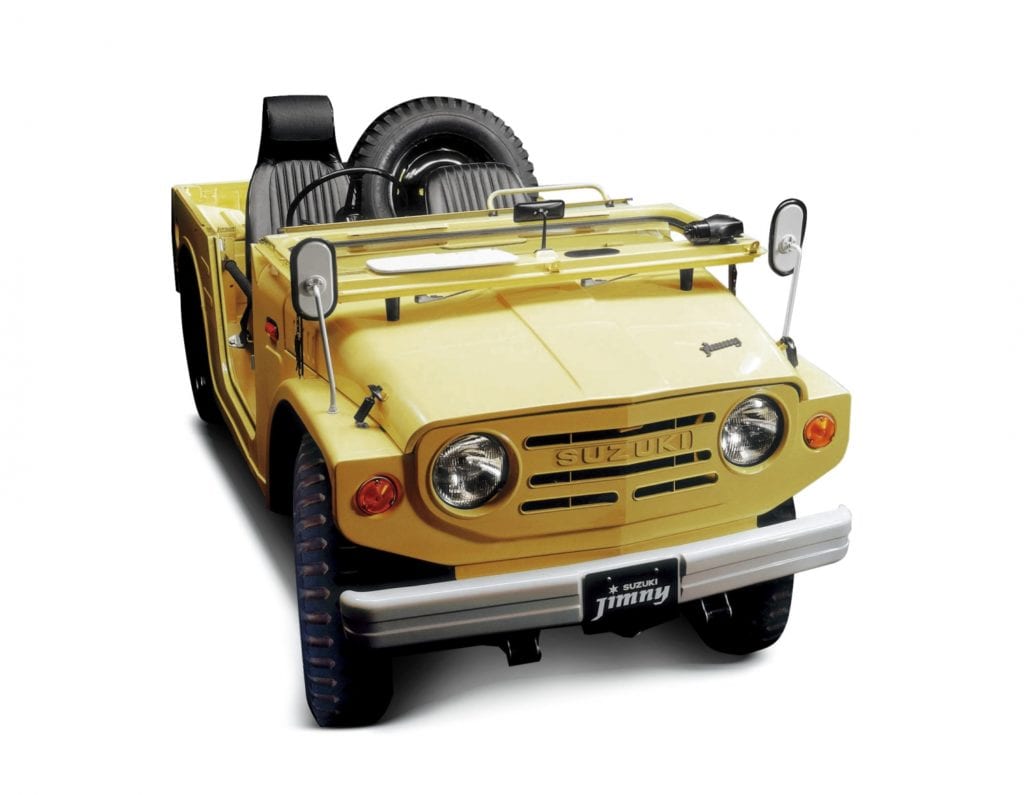
Probably the most significant model however was the Suzuki Jimny LJ10 which debuted in 1970. This really set the scene for the compact, lightweight, immensely capable small off-road generation of models.
Out of this knowledge pool the company developed the world’s first ATV in 1982 which replaced the traditional and less stable trikes used by farmers and country people.
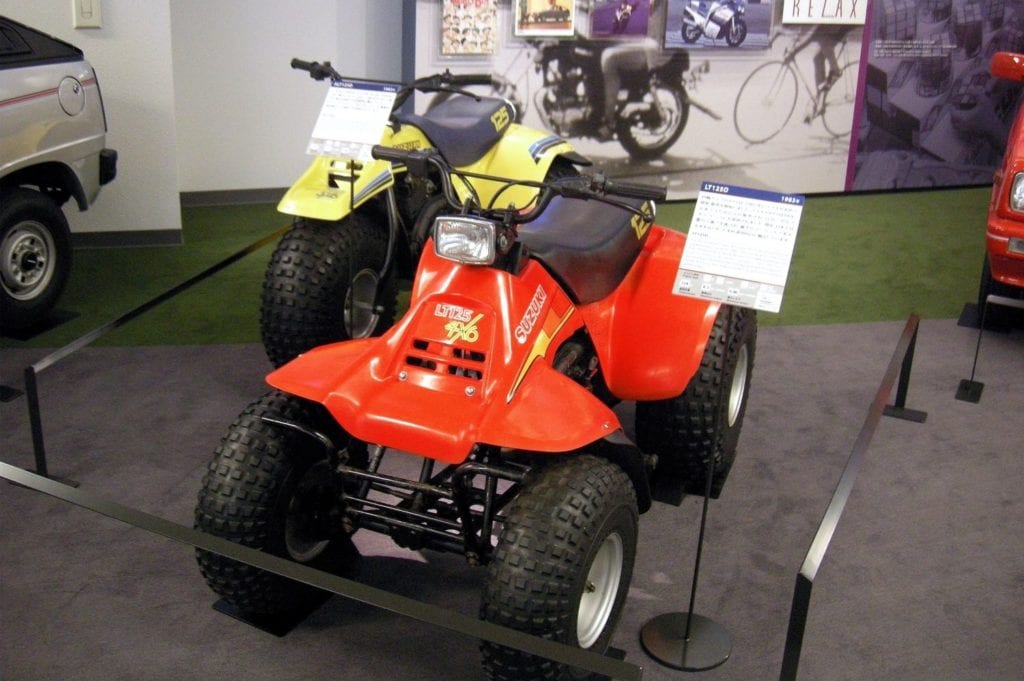
Looking and learning from their own experiences and those of other engineers and products, Suzuki were early adopters of hybrid power and are producing some of the most powerful quad bikes which are now a major transport for country businesses as well as recreational vehicles and emergency responders.
In three years time it hopes to be selling 2 million motorcycles and 3.7 million cars.
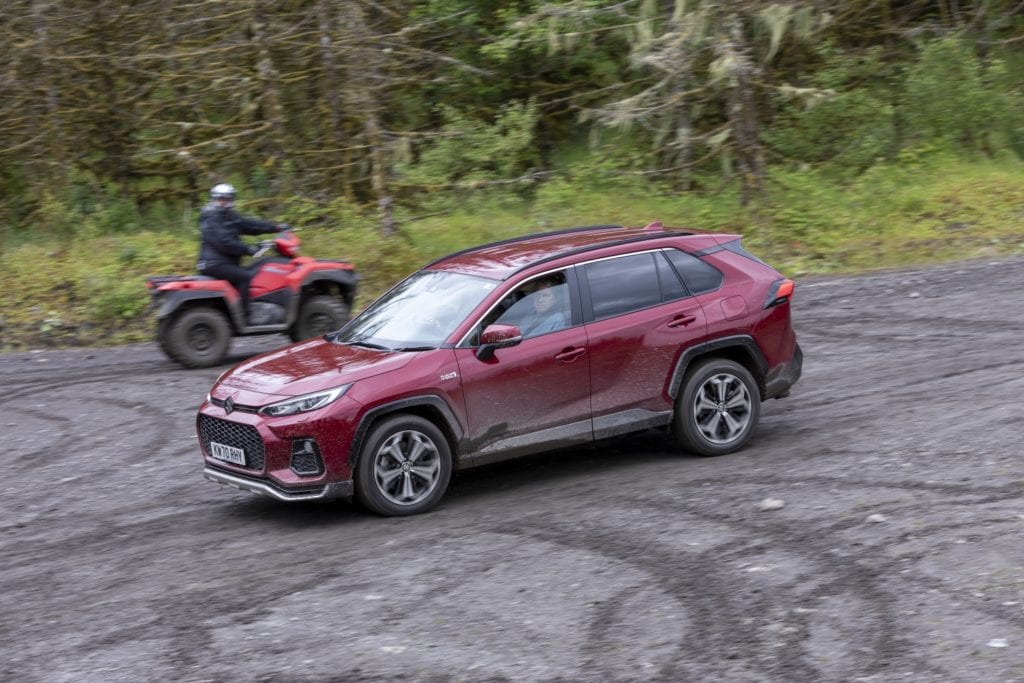
Today they have hybrid versions of every car model, six models available with 4×4 practicality, 19 types of motorcycle and two motocross models, 30 outboard engines and three different quad machines.
Off land, Suzuki makes 30 types of outboard motors which are renown for their reliability and fuel economy.
Suzuki innovation stretches back over a century and it’s looking towards a cleaner and greener future on road, off-road, and on the water.
A century of changes:
The world was slowly recovering from WW1 and a ‘flu pandemic which killed an estimated 50 million people.
Alcohol was banned in America until it was realised taxing it brought in much needed income after WW1.
Insulin was discovered in 1921 and diabetics usually died young before then.
You could buy heroin over the counter.
Coco Chanel introduces “Chanel No. 5”.
The farthing was Britain’s smallest coin, four of them made up a penny and 960 were in a pound.
The world’s first traffic lights were installed at a busy road junction in Detroit, after being invented by a serving police officer.
The 1921 Federal Highway Act designated east-west routes had even numbers and north-south they were given odd numbers.
The Roads Act 1920 created the Road Fund in Britain, with money from motorists and vehicle keepers and the first definitive numbering system followed shortly afterwards.
In car heating systems patented in the 1920s involved an extra manifold from the engine to the cabin, which replaced the option of a floor mounted heater-box containing a pre-warmed brick.
